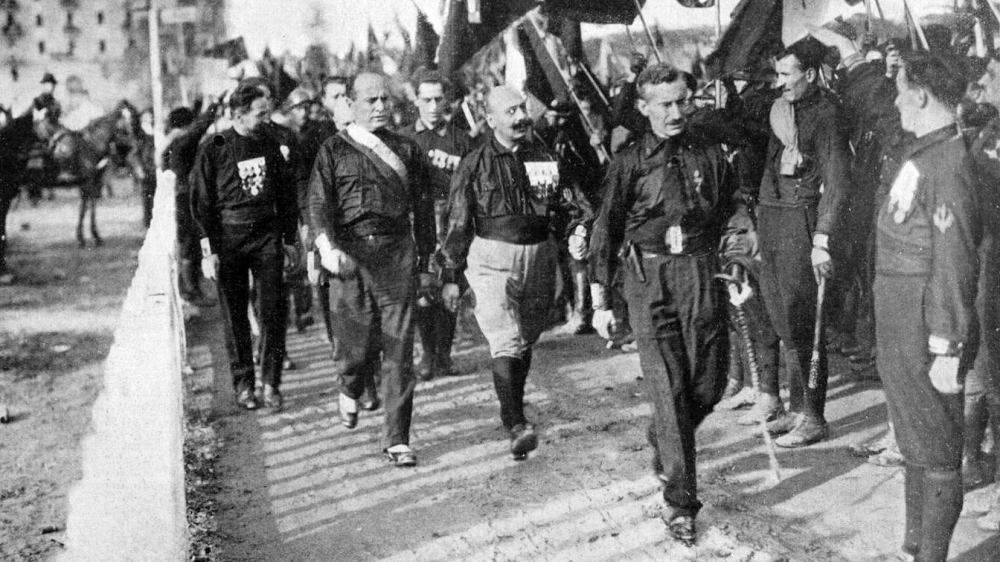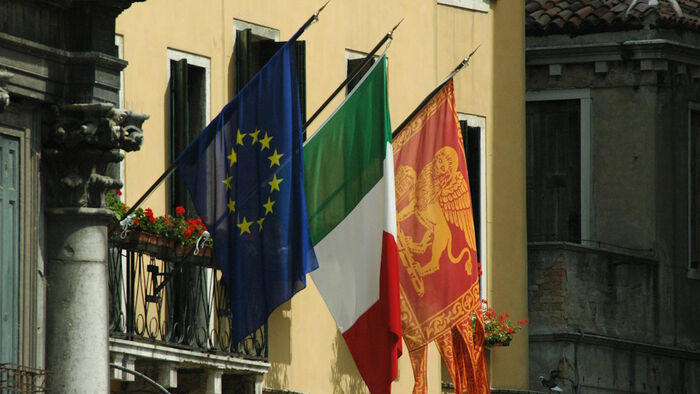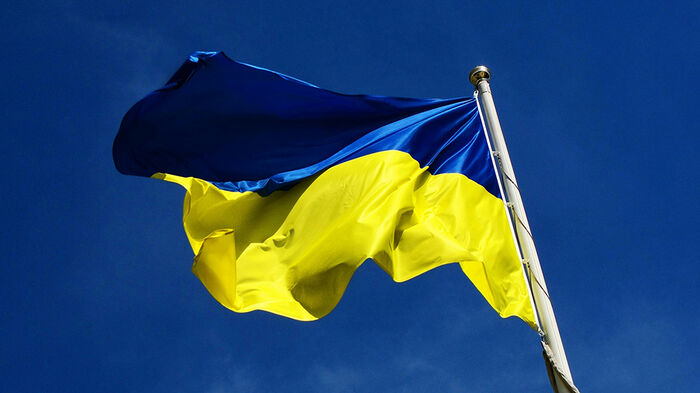The March on Rome, which began on this day one hundred years ago, was the moment of Fascism’s seizure of power in Italy. On the following day, Benito Mussolini, leader of the Fascists, was handed the prime ministership. This moment of supposedly radical disruption is often credited with the collapse of the liberal system and the subsequent spread of fascism across Europe, and even the globe. In the fascist version of history, this was a military event of heroic dimensions, when thousands of armed and uniformed fascists staged a revolution, seizing the capital and putting power in the hands of their young militant movement.
However, the facts of history show that the 'march on Rome' in this sense never took place. Rather, this was the slow decline of the liberal democratic regime in Italy, which did not happen in a day, but over several years from 1919 to 1925, through parliamentary negotiations, palace manoeuvres and intimidation tactics.
The history of the march is far from heroic, though very interesting when read today, when European far-right movements and parties are moving into the halls of power. In Italy, exactly one century after the 'march on Rome', Fratelli d'Italia is leading the most right-wing government in Republican history. This is a party with clear affinities and links to the neo-fascist past, not least the leader Giorgia Meloni. It is therefore worth knowing what the so-called March on Rome really was.
The rise of Fascism
The plan to seize power through a march on the Italian capital had circulated in some form within the Fascist movement already since 1919. The National Fascist Party (Partito Nazionale Fascista, PNF) was founded in November 1921 and at that time already possessed characteristically fascist traits: ultra-nationalism, authoritarianism, populism, anti-communism, the legitimisation of violence, hierarchy, loyalty to the Leader, and the promise of order and authority. Leadership was in the hands of Benito Mussolini, a politician as opportunistic and pragmatic as he was unscrupulous.
The Fascists, many of them war veterans with revolutionary ambitions, had made themselves known in the years of the so-called biennio rosso (Two Red Years, 1919-1920) marked by continuous strikes in the factories and land occupations in the countryside. In the local elections of 1920, a quarter of municipal administrations had gone to the socialists and republicans. The growing socialist left aimed for revolution, inspired by the Bolshevik Revolution in Russia in November 1917. In response, fascist squads (squadristi), led by local leaders, the ras, and not so covertly financed by rich and powerful landowners, traversed the country, especially in northern and central Italy. They attacked and even murdered trade union and left-wing party leaders, burned and looted their headquarters and socialist newspaper offices. Political opponents were typically forced to drink castor oil in what became a notorious Fascist method to degrade their enemies. The climate was one of civil war. Fascist attacks in left-wing cities ended in most cases with the dissolution of the city’s municipal council and its replacement by a commissioner acceptable to the right.
Fascist violence increased during the national elections of 1921, and even the moderate Italian press began to justify it as a reaction to socialist mobilization. Fascist squads even beat left-wing parliamentary deputies, while the government, faced with this illegal violence, abdicated its monopoly on violence, and relied on Mussolini's armed gangs. By the summer of 1922, the PNF had grown to 300,000 members, and now controlled several municipalities in the north and centre. The ras became increasingly eager to conquer Rome, galvanised by the fact that local police forces and prefects, who were sometimes complicit in the violence, mostly ignored their attacks on the left.
A dual-track strategy for power
The failed anti-fascist general strike of August 1922 encouraged the Fascists to deliver a final attack. At this point Mussolini opted for a dual-track strategy. On one hand, the attacks on political opponents intensified in September. The Fascists occupied towns and cities, particularly prefectures, post offices and train stations in the Italian provinces, generating an escalating climate of terror. As for the March on Rome itself, Mussolini personally took care of the details together with his closest associates, Italo Balbo, Michele Bianchi, Emilio De Bono, and Cesare Maria De Vecchi. He spoke openly about a planned march for weeks in speeches and articles and finally also at the Fascist Party congress in Naples on 24-25 October. On the other hand, Mussolini himself pursued a legal path. He contacted leading proponents of the ruling Liberal party, who met him under the assumption that they could use him. Mussolini was a rebel against the rules of parliamentary democracy, a populist who could channel the frustrations and fears of many Italians by accusing the incumbent government of corruption, inefficiency, and incompetence, but he was also motivated by a thirst for power. By the autumn of 1922, he was able to present himself as a moderate, and the only one able to curb Fascist violence.
On 25 October, Mussolini returned from Naples to Milan and went to great lengths to convince Catholics, monarchists, Freemasons, and industrialists of his party’s good intentions and the wisdom of a coalition government. It was precisely in these days that the true meaning of the ‘march on Rome’, as an implicit threat in every political negotiation, must be sought. Nationalists on the right were already convinced of the need to overcome the liberal system to restore order to the country. Notables of the old liberal political class demonstrated at that point that they had lost all self-confidence and were incapable of defending basic principles of liberalism. Moreover, having also lost support in the most recent elections of 1921, the Liberals were dependent on an alliance with other parties to obtain a majority in parliament. While the socialists were caught up in infighting between reformists and revolutionaries, the Catholics vetoed a government that had the participation of even the most moderate representatives of the left.
The political impasse pushed the Liberal government led by Luigi Facta to resign on 27 October. Just after resigning, Facta requested a decree to proclaim a state of siege, which would have made it possible to deploy the army against the Fascists. But King Vittorio Emanuele III refused to sign the decree on the morning of 28 October. From the consultations he had had with the Liberal and Catholic parties and with the nationalists, the king probably realised that there was widespread support for a coalition government headed by Mussolini.
The ‘March’
It was thus that the 'March on Rome' remained an event threatened and feared, but which never actually took place in the way intended. On the morning of 28 October, during incessant rain, only 5000 Fascists were ready at four strategic points around the capital, but they were unable to reach the city because the railway routes were disrupted. Even if they had reached their destination, the army would have had no difficulty in defeating them. This was unnecessary regardless, because the matter was settled in the previous days. On 29 October, Mussolini travelled down to Rome from Milan to assume office as prime minister.
On 30 October, the Blackshirts finally arrived in Rome, where they were housed in barracks and schools by order of the king and the new prime minister. In Rome, they continued attacking working-class neighbourhoods, while the police gave them complete freedom of action. Mussolini declared the capital quiet and peaceful. In the rest of Italy, they continued to occupy and destroy the headquarters of not only socialists and communists, but also Catholic and Liberal party offices and newspapers. Fascist violence killed twenty-two people in those hours.
It was only on 31 October that 16,000 Fascists, an army of private citizens with illegal weapons, were allowed to parade through the centre of the eternal city, in front of the Altare della Patria and the Quirinale, greeting the King and Prime Minister Mussolini. That performance was fundamental to the myth of the so-called fascist revolution, used by the regime’s propaganda machine in the following years to persuade Italians of fascism's revolutionary nature. However, the actual events of 27-31 October 1922 were a more banal change of ruling elite, which saw Mussolini enter government alongside Catholics, nationalists and old liberals in an anti-socialist coalition. It was not a coup d'état as the anti-fascists of the time claimed, but a change of government that underscored the existence of widespread authoritarian tendencies in interwar Italy.
Although it was a bluff, the ‘March on Rome’ nevertheless had a powerful impact in both Italy and the rest of Europe: it showed there was an alternative to the liberal democratic system other than a traditional military dictatorship or an authoritarian monarchy. It demonstrated that one could successfully infiltrate, corrupt, and weaken the liberal democratic system from within. It proved that small-scale – if extreme – violence could be used strategically, without escalating to full-blown civil war, to break down resistance from the establishment. After the fascist dual-track strategy for power had proved successful, the ‘March on Rome’ set a new standard for the new interwar right.
And the role of violence should not be underestimated: although it did not explode on 28 October, it had been widely used in the years and months before, and continued to be used in the months and years that followed. Italian Fascism was from the very beginning dependent on violence, real or threatened. As scholars Giulia Albanese and Roberta Valli write, violence functioned to conquer a new political space, to win the consent of the Italian right-wing public, and to create new bonds among the most intransigent and revolutionary fascists.
Filippo Turati, a leader of the Italian left in those days, pointed out that the 'March on Rome' marked a new way of doing politics, according to which the Italian government was no longer legitimised by parliament, but in fact demanded this legitimisation with the threat of force. With this, Italy had created a new regime, which a few years later would also de jure become a dictatorship.
.jpg)




